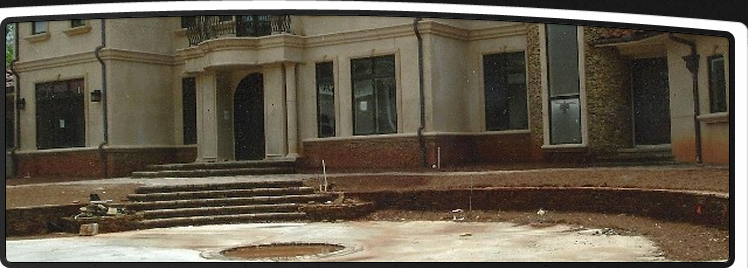| |
|

Frequently Asked
Questions About
Design
Considerations.
We try to anticipate questions you
might have about our PRODUCT / SERVICE
and provide the answers here. If you
need additional information send email
to info@gdconstructiongroup.com
|
|
1.
|
What are the
maximum deflection criteria for the
EIFS PB system?
|
|
|
|
|
Do EIFS have a
fire rating?
|
EIFS alone do not have a fire
rating. Testing has been performed
to confirm that the fire resistance
of an already rated wall assembly is
maintained and is not reduced by the
addition of an EIFS.
|
|
|
Should EIFS be
applied below grade?
|
No. Building codes have criteria
for minimum separation of siding
materials from grade. EIFS
manufacturers generally require that
EIFS be maintained a minimum 8
inches above finished grade to
ensure code compliance. At Concrete
patios, walks, etc. the systems
should be held a minimum of 8 inches
above the finished surface.
|
|
|
Is mechanical
attachment of EIFS recommended to
resist high wind loads?
|
No. In general, adhesive attachment
of EIFS to sound supporting
construction provides superior wind
load resistance in comparison to
mechanical attachment. It is
important in an adhesively attached
system that the supporting
construction is free of surface
damage, defects, or contamination.
In the case of frame construction,
sheathing must be attached with
fasteners and fastener spacing that
are capable of resisting wind loads.
|
|
|
What are the
limitations for usage of EIFS in
high wind load areas?
|
Independent testing has been
performed to determine the ultimate
strength of a manufacturer's
adhesives to various substrates. The
average tensile bond strength was
determined to be approximately 20
psi, which converts to 2880 psf. It
should be evident that adhesively
applied EIFS provides bond strength
well in excess of what is needed for
virtually any projects. The design
variables to achieve higher wind
load resistance occur within the
substrate system and are the
responsibility of the project
designer.
|
|
|
Is "greenboard" a
suitable substrate for EIFS?
|
No. Gypsum wallboard in compliance
with ASTM C 630, often referred to
as "greenboard" (because it has a
green paper facing on one side), is
an interior wallboard commonly used
in wet areas such as bathrooms.
Suitable gypsum board substrates for
EIFS are gypsum sheathing in
compliance with ASTM C 1396
(formerly C 79), glass-mat gypsum
sheathing in compliance with ASTM C
1177 (Dens-Glass Gold® or BPB
GlassRoc), and gypsum fiber panels
in compliance with ASTM C1278
(Fiberock® Brand, Aqua Tough™). The
sheathing manufacturer's
instructions should be followed with
respect to handling and
installation.
|
|
|
What determines
the use and location of a vapor
retarder in a wall assembly?
|
The selection and/or location of a
vapor retarder is project specific
based on numerous factors including
climate, wall components, etc., and
as such is a design consideration
that is the responsibility of the
design professional.
|
|
|
|


